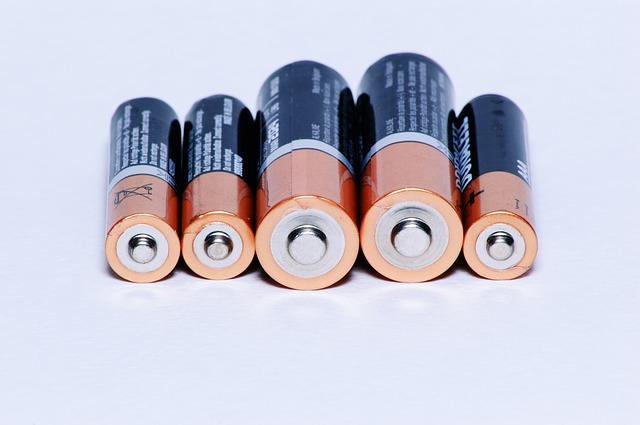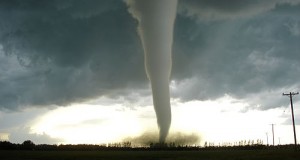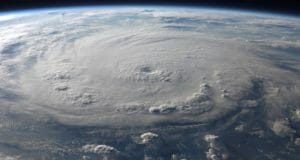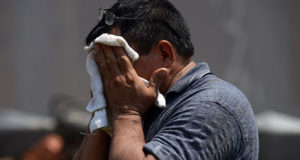Editor’s note: This is the second story in a two-part series about what the federal government says should be stockpiled. Read part 1 here.
Perhaps surprisingly, the federal government has been part of what has driven the prepping movement.
FEMA’s “ready.gov” website was developed with the idea of helping people to prepare for a natural disaster so that they would have a better chance of surviving it. While FEMA isn’t the definitive source for survival information, a number of things that are widely accepted in the prepping community trace their roots right back to Ready.gov.
The most glaring example of this is the three-day food rule, which defines that bugout bags, otherwise known as 72-hour bags, have three days of food in them. Just about everyone talks about having three days of food in their bug-out bag, without anyone taking about the “why” behind that figure. But here’s the why: because the government said so.
Personally, I carry five days of food in my bug-out bag, and have another couple of weeks worth in a secondary bag, with even more food in other portable containers. The idea is to take as much food with me as I can, and use the food from the other containers first, leaving what’s in my bug-out bag for last. That way, if I have to abandon my vehicle and the other food, I’ll at least have that five days’ worth.
So, where did FEMA’s idea of three days’ worth of food originate? It came from their master plan, which states that they will have relief services in place in three days. Forget that they haven’t been overly successful in accomplishing that in the past, but it’s still their plan.
We can extrapolate a very important point from this. That is: everything that the government says about disaster preparedness is based upon the assumption that the Nanny State government will be there to help you. If you trust the government, that’s fine; but if you don’t, then it’s not a good idea to put too much stock in what they offer as survival advice.
With that in mind, let’s take a look at FEMA’s list of “Recommended Items to Include in a Basic Emergency Supply Kit.” This printable list is what FEMA recommends having on hand, mostly with the idea of surviving a natural disaster.
Are You Prepared For A Lengthy Blackout? Get Backup Electricity Today!
In addition to food and water, the list includes:
- Battery-powered or hand crank radio and a NOAA Weather Radio with tone alert and extra batteries for both.
- Flashlight and extra batteries.
- First-aid kit.
- Whistle to signal for help.
- Dust mask, to help filter contaminated air, and plastic sheeting and duct tape to shelter-in-place (better to use a medical grade mask to keep out pathogens, too).
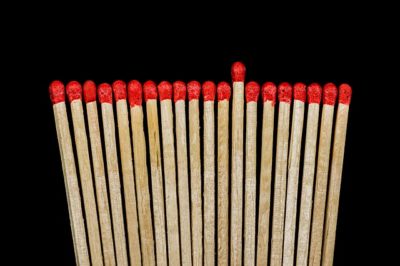 Moist towelettes, garbage bags and plastic ties for personal sanitation.
Moist towelettes, garbage bags and plastic ties for personal sanitation.- Wrench or pliers to turn off utilities.
- Can opener for food (if kit contains canned food).
- Local maps.
- Prescription medications and glasses.
- Infant formula and diapers.
- Pet food and extra water for your pet.
- Important family documents such as copies of insurance policies, identification and bank account records in a waterproof, portable container.
- Cash or traveler’s checks and change.
- Emergency reference material such as a first-aid book or information from ready.gov.
- Sleeping bag or warm blanket for each person. Consider additional bedding if you live in a cold-weather climate.
- Household chlorine bleach and medicine dropper. When diluted nine parts water to one part bleach, bleach can be used as a disinfectant. Or in an emergency, you can use it to treat water by using 16 drops of regular household liquid bleach per gallon of water. Do not use scented, color-safe or bleaches with added cleaners.
- Fire extinguisher.
- Matches in a waterproof container.
- Feminine supplies and personal hygiene items.
- Mess kits, paper cups, plates and plastic utensils, paper towels.
- Paper and pencil.
- Books, games puzzles or other activities for children.
Before going any farther with this, we need to understand exactly what this list is. By looking at it, it is immediately clear that the items listed are for sheltering in place, in your home, while waiting for government relief. That, in turn, assumes that the government will be able to bring relief, that they will be able to do it in three days, and that they will physically be able to get to you. Those are some pretty big assumptions.
When Hurricane Katrina hit in 2005, one of the many problems that delayed the arrival of relief into the New Orleans area was the trees and other debris scattered on the roads. There were many places where the roads had to be cleared before the trucks carrying the relief supplies could make it to those who needed it.
FEMA’s inability to deal with the situation in a timely manner was obvious and examined in great detail. So, it would be natural to think that they would have been ready seven years later when Hurricane Sandy hit the East Coast. But they didn’t even put out requests for quote (RFQs) for the supplies they needed until the day after Sandy hit. It doesn’t look like they learned a whole lot.
While there are many other examples we could use, I’ll just mention one other. In 2016 there was a massive flood in Louisiana, affecting about 30 parishes (what the rest of us call counties). In that case, it wasn’t FEMA that rescued people and brought relief, but rather the people of Louisiana helping each other. Some used their boats to rescue people stranded on their roofs, while others set up emergency shelters and cooked meals for those who were displaced by the flood. It was a great demonstration of community outpouring to help one another out.
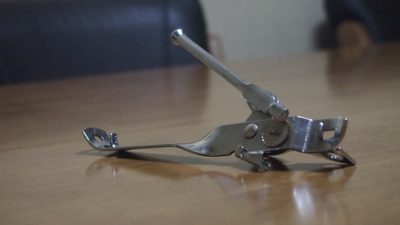 Since it’s clear that there are many cases where the government can’t get in place fast enough to truly make a difference, accepting the idea that three days’ worth of food and water is enough, is ludicrous. But even if they could, that three-day figure doesn’t take into account any long-term or national disaster scenarios.
Since it’s clear that there are many cases where the government can’t get in place fast enough to truly make a difference, accepting the idea that three days’ worth of food and water is enough, is ludicrous. But even if they could, that three-day figure doesn’t take into account any long-term or national disaster scenarios.
Long-term disasters are those that last anywhere from a few months to more than a year. In such a case, it’s clear that we’d need a whole lot more food than the three days mentioned in FEMA’s list; or, we need to grow our own food.
Situations like terrorism taking out the grid or bio-warfare would mean that we’d all have to be self-sufficient for months.
Get Instant Electrical Power In A Convenient, Portable Briefcase!
Many writers have undertaken to write complete lists of what you’ll need in these sorts of situations, myself included. Take a look at the article on “22 Things Besides Food and Water That You Should Stockpile” or “21 Surprising Items You’ll Need when the Grid Is Down.” The truth is, there is no way of knowing for sure everything we’ll need, so we need to plan for everything and hope that we didn’t miss anything.
But let me take a moment to make a quick case for what’s missing from the government’s list. To determine what we need, we always have to start out with the basics for survival. Those are:
- Ability to keep warm.
- Clean water.
- Nutritious, high-energy food.
To support that, we need to add:
- The ability to defend ourselves.
- First-aid supplies.
- The ability to start a fire.
- Tools.
Just looking at those seven areas, it’s clear that the FEMA list is missing a lot of things. They mention matches to start a fire, but they don’t talk about fuel for the fire. Their list assumes that everyone has a stock of firewood sitting behind their homes, as well as a government-approved wood-burning stove to burn it in? Incomplete answers to survival problems, like this one, get people killed.
They do mention the ability to purify water with bleach, but that’s the only water purification method they mention, and they missed the part about shaking up the water once you put the bleach in it to make the bleach dissipate, and then allowing it to sit for 20 minutes to kill the pathogens. But why not mention some other methods of water purification? Water is such an important part of survival, that depending on only one method is not safe.
Two of the “supportive” areas that I mentioned above are totally missed by FEMA: the ability to defend yourself, and tools. One of the things you can count on in the aftermath of any disaster is the criminal element coming out of the woodwork to take advantage of the situation.
The fact that they missed tools can be forgiven, if we assume that the plan is to shelter in place, in your home, awaiting the arrival of government aid. But then, if you were one of those people, you wouldn’t be reading this website. The fact is that many survival tasks, from building or repairing shelter to preserving food, are going to require tools of some sort. Of anything that FEMA has left off their list, this is probably the biggest omission. Yes, you can make it three days without those tools, but not a whole lot longer.
All in all, the only true value that the FEMA list has is as a starting point. For someone who hasn’t done anything about emergency preparedness, this list is an eye-opener. But the sad thing is that many will take this list as being the definitive word on survival and not go any farther.
Simply put, it is not wise to put our survival in the not-so-capable hands of the government.
What is your reaction to the FEMA list? Share your thoughts in the section below:
 Off The Grid News Better Ideas For Off The Grid Living
Off The Grid News Better Ideas For Off The Grid Living

